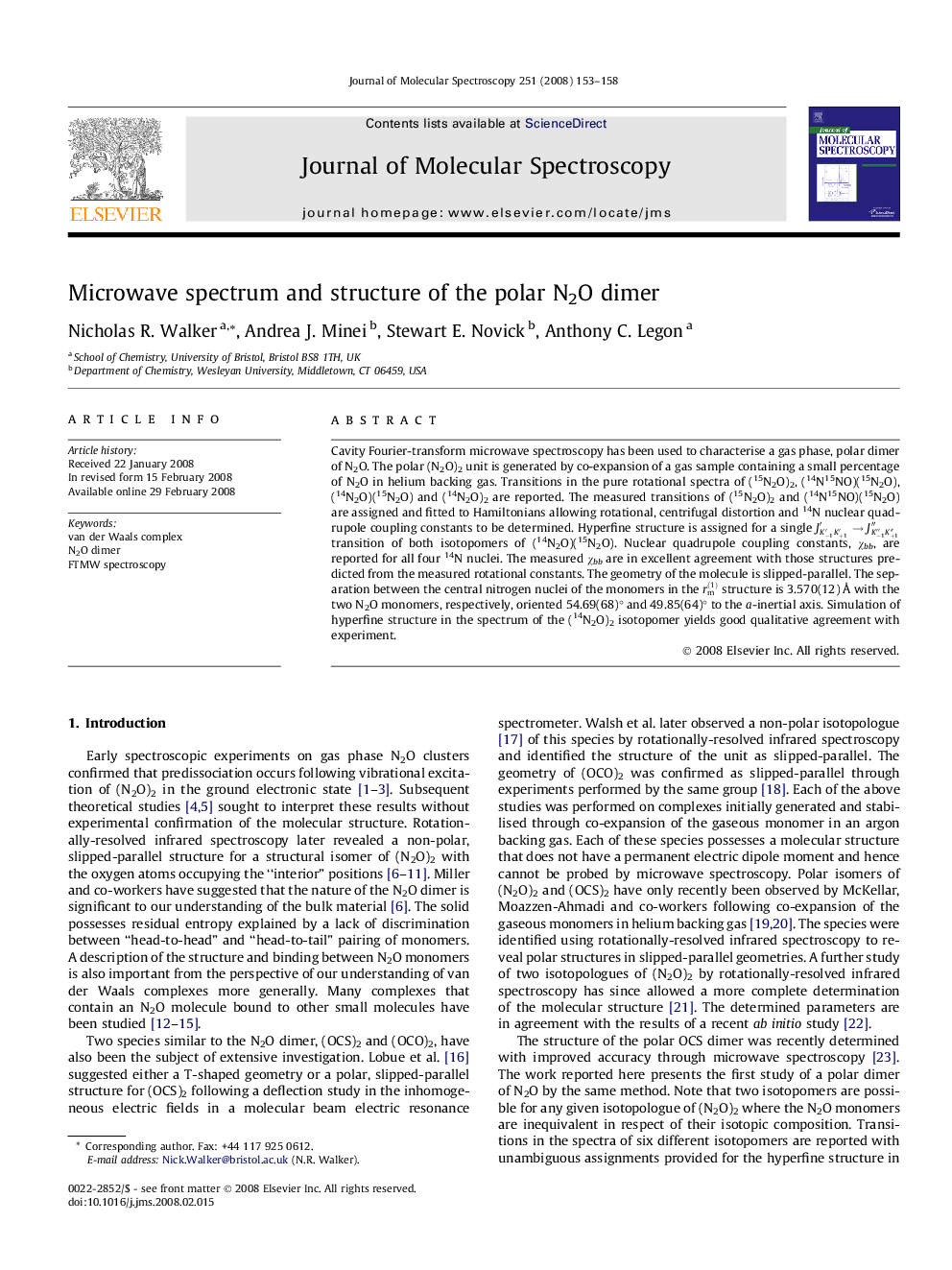| Article ID | Journal | Published Year | Pages | File Type |
|---|---|---|---|---|
| 5415554 | Journal of Molecular Spectroscopy | 2008 | 6 Pages |
Abstract
Cavity Fourier-transform microwave spectroscopy has been used to characterise a gas phase, polar dimer of N2O. The polar (N2O)2 unit is generated by co-expansion of a gas sample containing a small percentage of N2O in helium backing gas. Transitions in the pure rotational spectra of (15N2O)2, (14N15NO)(15N2O), (14N2O)(15N2O) and (14N2O)2 are reported. The measured transitions of (15N2O)2 and (14N15NO)(15N2O) are assigned and fitted to Hamiltonians allowing rotational, centrifugal distortion and 14N nuclear quadrupole coupling constants to be determined. Hyperfine structure is assigned for a single JK-1â²K+1â²â²âJK-1â³K+1â³â³ transition of both isotopomers of (14N2O)(15N2O). Nuclear quadrupole coupling constants, Ïbb, are reported for all four 14N nuclei. The measured Ïbb are in excellent agreement with those structures predicted from the measured rotational constants. The geometry of the molecule is slipped-parallel. The separation between the central nitrogen nuclei of the monomers in the rm(1) structure is 3.570(12) Ã
with the two N2O monomers, respectively, oriented 54.69(68)° and 49.85(64)° to the a-inertial axis. Simulation of hyperfine structure in the spectrum of the (14N2O)2 isotopomer yields good qualitative agreement with experiment.
Related Topics
Physical Sciences and Engineering
Chemistry
Physical and Theoretical Chemistry
Authors
Nicholas R. Walker, Andrea J. Minei, Stewart E. Novick, Anthony C. Legon,
